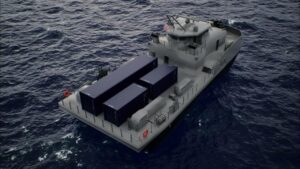Conductive silicone rubber is a special type of silicone material that can conduct electricity.
Normally, silicone is an electrical insulator, meaning that it doesn’t let electricity flow through it. When silicone is mixed with electrically conductive particles, however, the resulting compound becomes able to carry electrical current based on its properties.
How is Conductive Silicone Rubber Made?
Conductive silicone rubber is made by combining a silicone elastomer base with electrically conductive fillers that allow electric current to pass through the material. The process involves formulation, mixing, and curing steps to achieve the desired mechanical flexibility of silicone and the electrical conductivity needed for EMI shielding.
Making conductive silicone rubber has six main steps.
- Start with the silicone base polymer
- Add conductive fillers
- Mixing and compounding
- Curing (cross-linking)
- Post-curing and finishing
- Testing and quality control
Start with the Silicone Base Polymer
The base material is typically polydimethylsiloxane (PDMS): a flexible, heat-resistant, and chemically stable silicone polymer. Depending on the desired curing process, the base can be addition cured or peroxide cured.
Addition-curing (platinum-catalyzed) produces high-purity, low-shrinkage rubber. It’s often used for high-performance EMI gaskets.
Peroxide-curing is less expensive but can leave residues that slightly affect conductivity and stability.
The silicone base provides in an EMI elastomer provides:
Elasticity and temperature resistance
Environmental durability (ozone, UV, and chemical resistance)
Insulation (which must be modified by adding conductive fillers)
Add Conductive Fillers
The conductive behavior comes from metallic or carbon-based fillers dispersed through the silicone matrix.
Common filler types include:
Silver or silver-plated particles (e.g., silver-plated aluminum, silver-plated copper, silver-plated glass) have the highest conductivity and are used in aerospace and military EMI gaskets.
Nickel-coated graphite provides good conductivity at lower cost. It’s used in commercial EMI gasket applications.
Carbon black or graphite provides moderate conductivity and is used for antistatic or dissipative products.
The filler material must form a percolating network (i.e., continuous conductive path) throughout the silicone. The filler type, particle size, and loading percentage are carefully controlled to achieve this while maintaining flexibility.
Mixing and Compounding
The fillers are mixed into the silicone base using high-shear mixers, such as:
Two-roll mills
Internal mixers (Banbury mixers)
Planetary mixers
Key goals during mixing include:
Achieve a uniform filler dispersion
Avoid air entrapment
Maintain consistent rheology (viscosity and flow behavior)
Process additives, pigments, and catalysts may be added at this stage.
Curing (Crosslinking)
After compounding, conductive silicone rubber is cured into its final elastomer form. Curing methods depend on the chemistry of the silicone base:
Addition-cure systems use a platinum catalyst and crosslinker. Curing occurs at 100–200°C.
Peroxide-cure systems use organic peroxides that decompose to form radicals, crosslinking the polymer chains when heated.
Curing transforms the silicone from a viscous compound into a solid, elastic, conductive silicone rubber.
Post-Curing and Finishing
There are two separate steps.
Post-curing occurs at elevated temperatures (e.g., 200°C for several hours) and improves mechanical stability and removes volatiles.
The conductive silicone rubber is then die-cut, extruded, or molded into EMI gaskets, EMI O-rings, EMI gasket sheets, or EMI extrusions.
Testing and Quality Control for Conductive Silicone Rubber
Final materials are then tested for:
Volume resistivity (ohm·cm)
Shore A hardness
Tensile strength and elongation
Compression set
Shielding effectiveness (for EMI applications)
Conductivity can range from 10⁻¹ to 10⁻⁴ ohm·cm for highly conductive silver-filled grades, to 10⁰–10² ohm·cm for carbon-filled types.
The table below summarizes the process of making conductive silicone rubber.
Summary
| Step | Purpose | Key Materials/Processes |
|---|---|---|
| 1. Silicone base | Provides flexibility and heat resistance | PDMS, curing agents |
| 2. Filler addition | Enables conductivity | Silver, nickel, carbon, graphite |
| 3. Mixing | Uniform dispersion | Two-roll mill, Banbury mixer |
| 4. Curing | Forms solid elastomer | Heat + catalyst or peroxide |
| 5. Post-curing | Stabilizes properties | Oven cure, finishing |
| 6. Testing | Ensures performance | Resistivity, tensile, EMI test |
For conductive silicone rubber, contact SSP.





